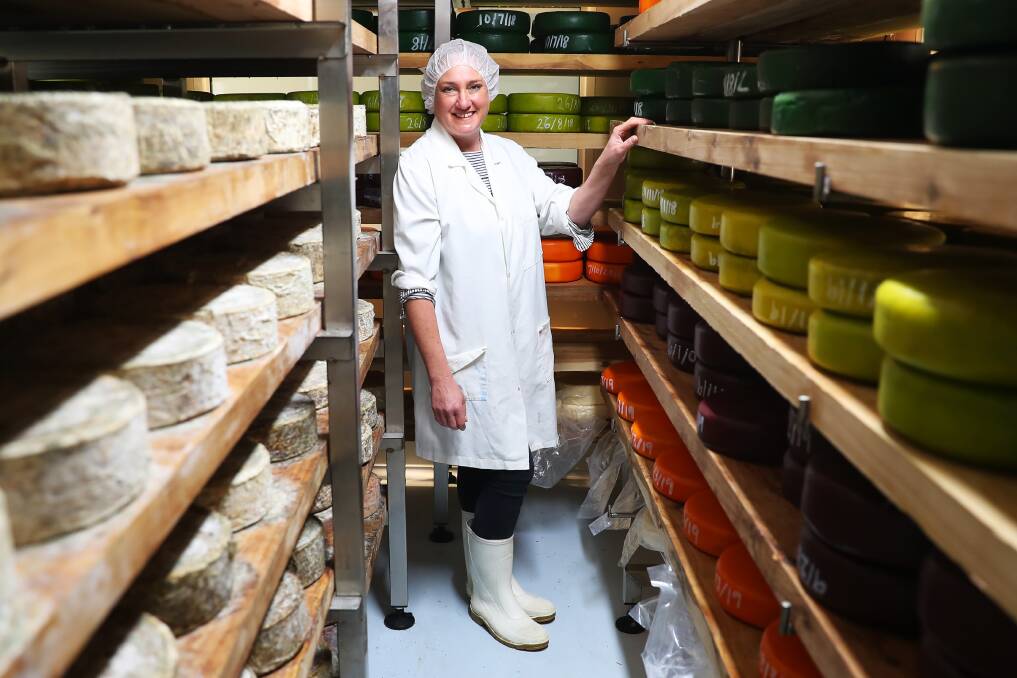Unlocking the Tricks of Artisanal Cheese Making: A Detailed DIY Guide
In the realm of cooking workmanship, artisanal cheese making stands as a testimony to the delicate balance in between practice and technology. As we get started on this trip to debunk the art of producing elegant cheeses, we are encountered with a tapestry of tricks and skills waiting to be deciphered.
Selecting the Right Milk
When starting the journey of artisanal cheese making, the choice of milk plays an important role in identifying the quality and characteristics of the last item. The kind of milk picked impacts the flavor, texture, and overall account of the cheese. Raw milk, straight from the pet, is preferred by many artisanal cheesemakers due to its one-of-a-kind mix of enzymes, bacteria, and taste substances. However, using raw milk features threats and guidelines, making sterilized milk a safer choice for novices.
When picking milk for cheese making, it is vital to think about the fat material. Higher fat web content in milk can result in a creamier and richer cheese, while reduced fat web content may bring about a drier and firmer structure. In addition, the source of the milk, whether from cows, goats, lamb, or buffalo, contributes unique tastes and characteristics to celebrity (Floridia Cheese Thomastown). Each sort of milk brings its own nuances, enabling a large range of cheese varieties to be crafted based on the selected milk. Ultimately, the choice of milk is an essential decision that establishes the structure for an effective artisanal cheese-making undertaking.
Culturing and Coagulating
To launch the cheese-making process, the critical steps of culturing and coagulating must be thoroughly performed to change milk right into curds and whey. Culturing entails presenting valuable microorganisms to the milk, which after that starts the fermentation procedure. These germs transform lactose (milk sugar) right into lactic acid, developing the acidic setting essential for coagulation. The kind of society utilized can substantially affect the flavor, structure, and ripening of the final cheese product.

The timing and temperature level control during culturing and coagulation are essential aspects that influence the last result of celebrity. Appropriate execution of these actions is vital to guarantee the wanted structure, taste, and consistency of the artisanal cheese being generated.
Draining and Pushing Curds
After the milk healthy proteins have coagulated and the curds have been cut to launch whey, the next important action in artisanal cheese making entails draining and pushing the curds to attain the desired structure and uniformity of the last cheese item. The time for draining can vary depending on the type of cheese being made and the preferred dampness content.
When the curds have actually completely drained, the next step is pressing. Pushing aids expel any type of staying whey and compacts the curds to create a strong cheese wheel. Pushing can be done making use of specialized cheese presses that use gentle click for source and consistent stress over an amount of time. The period and stress used throughout pressing will certainly affect the final appearance of celebrity, from soft and creamy to hard and firm. Correct pushing and draining you can try this out are vital steps that dramatically impact the high quality and attributes of the artisanal cheese being generated.
Aging and Flavoring Techniques
Implementing thorough aging and flavor methods is critical in enhancing the deepness and intricacy of artisanal cheeses, raising their taste accounts to elegant degrees of refinement and sophistication. Aging plays an essential duty in creating the special flavors and appearances that differentiate artisanal Get More Info cheeses. During the aging procedure, cheeses are kept in thoroughly controlled settings where elements such as airflow, moisture, and temperature are adjusted to encourage the development of advantageous mold and mildews and bacteria. This regulated environment permits the cheese to grow slowly, establishing rich flavors and intricate scents.
Flavoring methods additionally contribute substantially to the last taste of artisanal cheeses. Cheesemakers may select to present additional flavors by integrating components such as natural herbs, seasonings, or perhaps fruits into the cheese throughout the manufacturing procedure. Additionally, some cheeses are washed or massaged with different fluids, such as salt water or alcohol, to boost their flavors and textures.
Wrapping and Keeping Cheeses

Verdict
In conclusion, mastering the art of artisanal cheese making includes very carefully picking the appropriate milk, following precise culturing and coagulating processes, draining and pressing curds efficiently, and using different aging and flavor methods. Keep in mind to cover and save your cheeses effectively to make certain optimum taste and appearance growth.
Each kind of milk brings its very own subtleties, permitting for a vast array of cheese selections to be crafted based on the picked milk.After the milk healthy proteins have actually coagulated and the curds have been cut to release whey, the next important step in artisanal cheese making involves draining and pushing the curds to attain the wanted appearance and uniformity of the final cheese product. Most cheeses need to be covered in wax paper or cheese paper to enable them to breathe while securing them from drying out. For cheeses that need to continue aging, such as bloomy rinds or cleaned skins, ensure they are stored in a cool setting like a cheese cavern or a refrigerator set to the ideal temperature level. By paying focus to the wrapping and storage of artisanal cheeses, cheese manufacturers and lovers can preserve the integrity of these specials and completely enjoy their intricate tastes.
Comments on “Behind the Scenes with Cheese Makers Melbourne: Including Floridia Cheese”